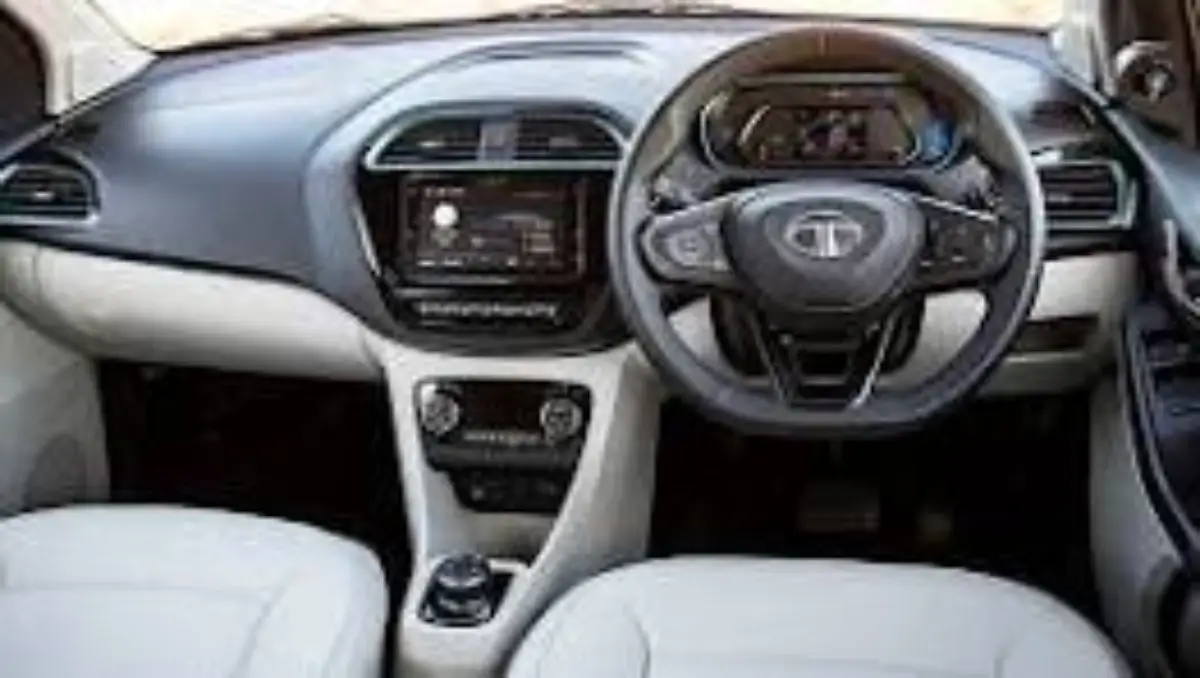Tata Tiago EV :Tata Motors has focused on hatchbacks with the introduction of the Tata Tiago EV, after ruling India’s electric vehicle (EV) market with the Nexon SUV and Tigor sedan. Because it shares a large number of parts and components with the internal combustion engine (ICE) version, it benefits from economies of scale as it is built on the same platform. It therefore has an enticing starting price range of Rs 8.49 lakh-11.79 lakh (ex-showroom). As a result, prices for all customers will increase by Rs 30,000–35,000; however, this price was only available to the first 20,000 customers. Does that mean it matters much less now?
The 19.2kWh Lithium Ferrous Phosphate (LFP) battery in the MR (Medium Range) version of the Tata Tiago EV is mated to a 61hp electric motor with a claimed range of 257 km. The 24kWh LFP battery in the LR (Long Range) version is mated to a 75hp electric motor with a claimed range of 315 km. There are two trim levels for the MR: XE and XT, with XT being the more popular. Most bookings are made on the LR, which comes in five different trim levels.
Tata Tiago EV: Exterior
As previously stated, the Tata Tiago EV is based on the ICE model, but it has some EV-specific styling cues, mostly found up front. The front grille area has a black enclosed panel with a “.EV” badge; the fog lamp surrounds and humanity line, which highlights the headlamps and front grille, are now finished in blue; and the front air-dam has a stylish body-colored encasing with a tri-arrow pattern.
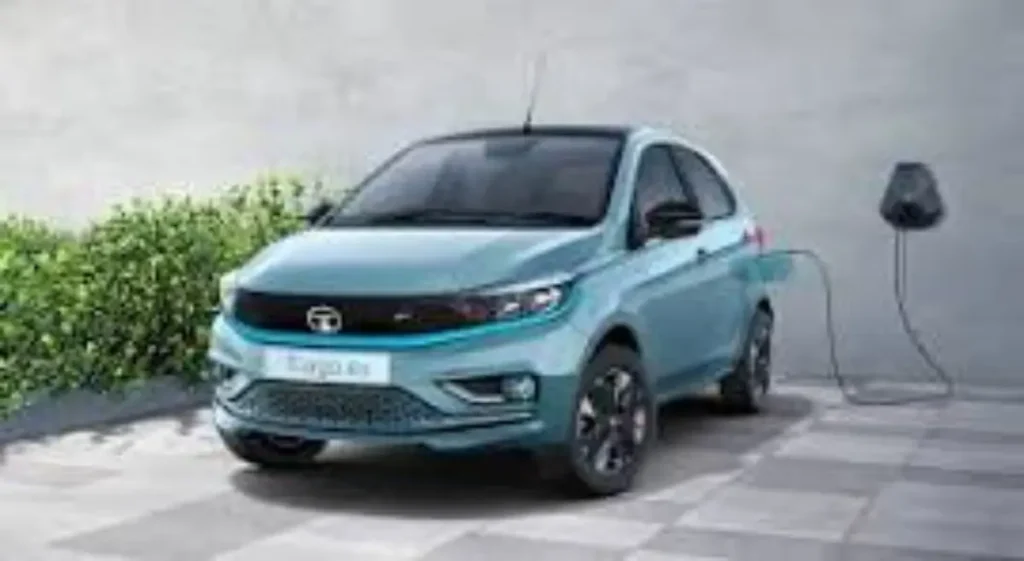
Instead of alloy wheels, all variants come with two-tone plastic wheel caps. For a sporty look, it also has a black roof, black mirror casings, and black door handle lining. The EV can be recognised from the back by the lettering “Tiago.EV” that runs across the tailboard. It’s amazing how the Tiago’s well-proportioned shape and simple lines manage to look timeless despite having a design language from 2016. It also happens to be a fairly attractive hatchback.
Tata Tiago EV: Interior
The well-appointed interior of the Tata Tiago EV is identical to that of the ICE version, but it is distinguished by an elegant two-tone black and off-white design with light blue accents. The off-white leatherette upholstery with light blue stitching is what really makes the cabin appealing, though it will eventually need special maintenance to keep it immaculate. Other EV-specific modifications include a rotary drive selector akin to the Tigor EV and new buttons for the electric charging lid release and braking regeneration levels, both of which are positioned beneath the touchscreen.
The ICE version’s flat-bottom steering, seats, climate control, digital instrument cluster, and other features are all retained. The touchscreen is also carried over, though it feels a bit dated with its small fonts and sluggish reactions. Its incredible eight-speaker Harman system, however, still sounds fantastic and is the best in its class. Tall adults may find the rear seat to be quite supportive, but headroom is limited. The front seats are comfortable, albeit narrow, for passengers with larger frames.
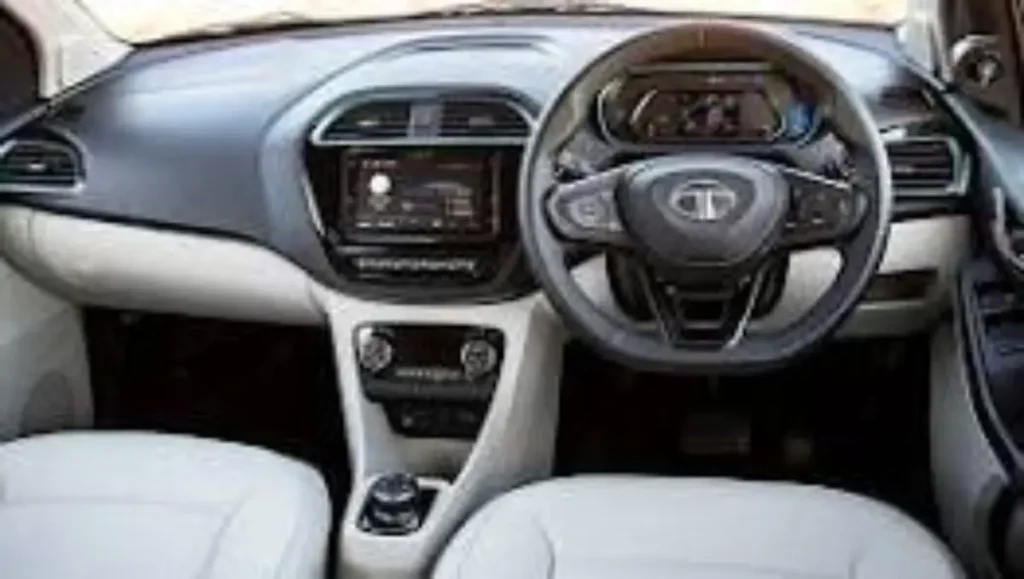
The Tiago EV’s floor height doesn’t change, unlike other EVs, which is good news because it prevents backseat passengers from being in a kneeling position. Not even the boot space has been compromised; it now holds 240 litres, which is two litres less than the ICE variant. An electric air compressor and gel sealant are included in place of the missing tyre, allowing users to temporarily fix a flat and drive to the closest tyre repair shop.
Tata Tiago EV: Battery
We took a ride in the Tata Tiago EV Long Range (LR) variant, which is propelled by a 75 horsepower permanent magnet synchronous motor (PMSP), as was previously mentioned. It gets power from a 24kWh LFP battery that is installed under the boot floor and replaces the ICE version’s fuel tank in a split configuration.
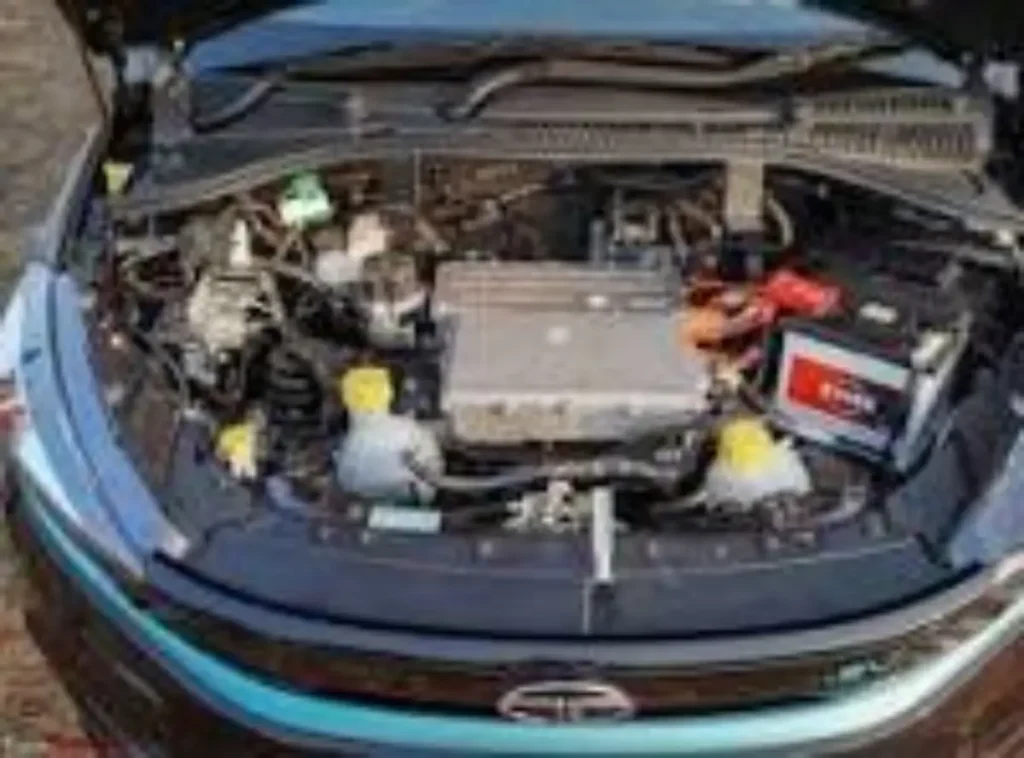
This electric hatchback weighs approximately 1,155 kg, including the battery, so its 114 Nm torque may seem low. However, it is lighter by 80 kg and has 56 Nm less torque than the Tigor EV. The Tiago EV receives a shorter final drive gear and some software modifications to compensate for the torque deficit. Additionally, there is a 320V architecture that is supposed to be more energy efficient than the 350V system used in the Tigor EV.
Tata Tiago EV: Range and Performance
It’s interesting to note that the Tata Tiago EV has two drive modes: City, which is the default drive setting and limits torque to 75%, and Sport, which allows the motor to reach its maximum potential. It gives us great pleasure to announce that even in the default drive mode, the electric motor has enough performance to keep up with traffic and fit into spaces. The acceleration feels incredibly smooth even though it isn’t “electrifying.” In most urban applications, it feels lively due to the motor’s instantaneous torque and linear throttle response. Therefore, the majority of owners will probably continue to be happy with the performance it provides.
You won’t miss anything except for that abrupt, “electric” response, which Tata claims was purposefully muted for a softer roll-on to lessen battery drain. Additionally, it has a tendency to roll backwards by one or two feet before rolling forwards when starting on steep inclines. Even at full throttle, there is still a slow pace of progress. Because Sport mode unlocks the full 114 Nm of torque, you’ll need to use the parking brake or simply remember to do so. This will minimise rollback and make the ascent relatively effortless.
While Sport has enough pop to keep you interested, City mode feels very linear. We timed a quick test from 0 to 100 kph in 14.72 seconds. The power delivery is smooth as expected, and although the mid-phase gradual roll is satisfactory, it only starts to taper as you approach triple-digit speeds, reaching its maximum at 120 kph.
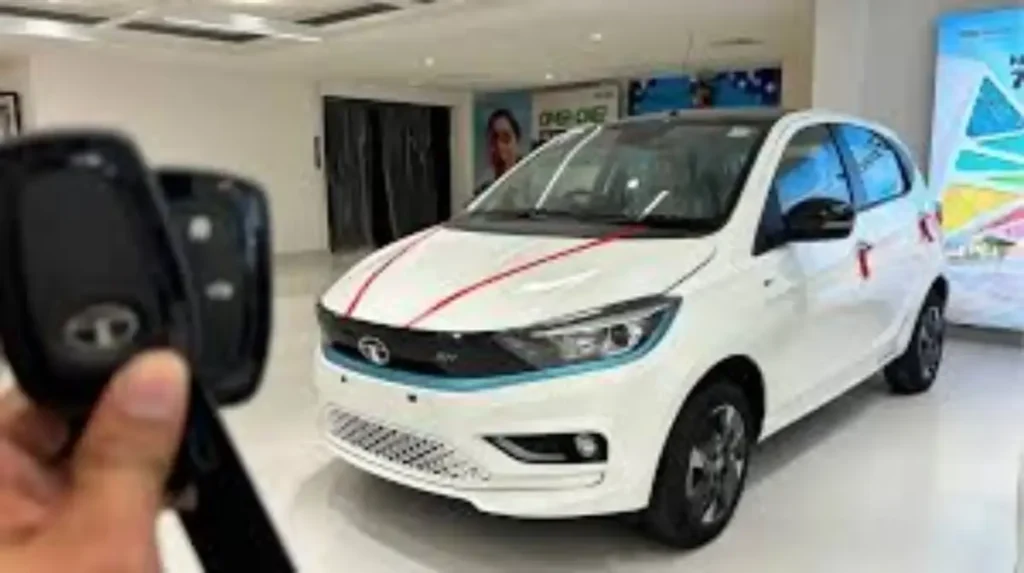
The Tata Tiago EV receives three stages of energy regeneration when braking, just like its fellow electric vehicles. Additionally, it has level 0, which is best used on motorways where regeneration is disabled and the vehicle rolls fairly freely, allowing for greater distance to be travelled. Using Level 3, on the other hand, is best reserved for steeper descents where the speed will naturally be controlled and the battery will also be charged. Level 3 will cause the vehicle to decelerate rather aggressively, as if you have pressed the brake pedal.
One-pedal driving is not possible because, even in level 3, the car will slow down to crawling speeds rather than completely stopping. It is stated that the Long Range version can travel 315 kilometres on a single charge. On the other hand, the Tata Tiago EV returned 193 km in our real-world range test on a mixed city and highway cycle. Tata estimates that the majority of Tiago EV buyers will drive less than 50 km per day, so charging the car twice or three times a week should be plenty. Speaking of charging, a standard 15A charger is supposed to take roughly nine hours to fully charge a battery from 10%; a 25kWh DC fast charger can accomplish the same task in roughly.
The Tata Tiago EV’s suspension is one of its best features; it feels well-developed and can absorb even the worst shocks from the road. It’s easy to manoeuvre between traffic gaps and park in tight spaces thanks to the light steering and short turning radius. Although the brake pedal feels softer than it does on the standard ICE version, it is still easy to get used to and has sufficient stopping power. The rotary drive selector, which is a carryover from the Nexon EV Prime and Tigor EV, could have been improved. Drivers frequently have second thoughts when switching between “D” and “R” on this system because it feels sluggish to react, especially when making three-point U-turns and parking.
Tata Tiago EV: Price and Verdict
One-fourth of pre-bookings are made up of first-time car buyers, so the Tiago EV needs to be a good everyday car in addition to being an excellent electric vehicle. As the latter, the Tiago has garnered accolades for its luxurious cabin, generous tech and equipment, sturdy construction, and safety certifications. Furthermore, the Tiago’s driveability, smoothness, and refinement have all greatly increased since the electric drivetrain was installed.
Tata Tiago EV Review on You-Tube
Also Read: The Royal Enfield Hunter 350: A Must-Have for Motorcycle Enthusiasts in India
Share to Others
